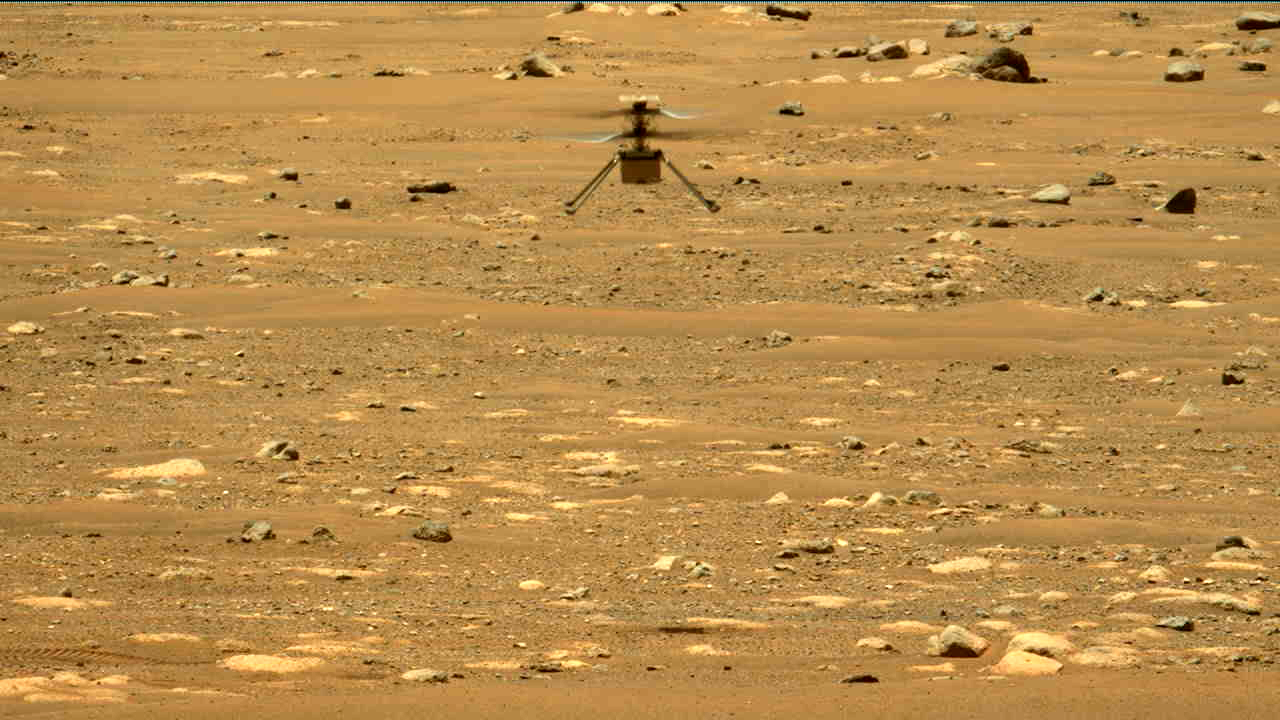Reviewed by Alex SmithAug 27 2021
The fact that lithium-ion batteries exhibit poor cold-weather performance is well known, and that has implications for a few of their most essential applications—right from starting an electric car in a Wisconsin winter to flying a drone on Mars.
 The drone Ingenuity as seen by NASA’s Mars Perseverance rover. SLAC researchers are working to understand the effects of the extreme temperatures of distant planets—or Midwest winters—on the rechargeable batteries that power devices like these. Image Credit: NASA/JPL-Caltech/Arizona State University/Malin Space Science Systems.
The drone Ingenuity as seen by NASA’s Mars Perseverance rover. SLAC researchers are working to understand the effects of the extreme temperatures of distant planets—or Midwest winters—on the rechargeable batteries that power devices like these. Image Credit: NASA/JPL-Caltech/Arizona State University/Malin Space Science Systems.
Researchers at the Department of Energy’s SLAC National Accelerator Laboratory have now found a neglected feature of the issue. Storage of lithium-ion batteries at sub-freezing temperatures could crack certain parts of the battery and isolate them from materials around, thereby decreasing their electric storage capacity.
Yijin Liu, a SLAC scientist, and Jizhou Li, a postdoctoral fellow attempted to make this breakthrough while analyzing the cold-weather performance of the cathode, the part of the battery into which electrons flow when it is in use. Preliminary studies have discovered that storing cathodes at temperatures below 0 °C caused the batteries to lose up to 5% more of their capacity after 100 charges compared to batteries that are stored at warmer temperatures.
To comprehend the reason behind this, the scientists turned to a combination of X-ray analysis techniques at SLAC’s Stanford Synchrotron Radiation Light source and machine learning methods that Li has been working on during the past few years.
The combination helps them to determine separate cathode particles. This implies that the team could study thousands of particles right away, compared to only the handful they could determine only with their eyes.
According to Liu, those methods collectively exposed that cold temperatures were responsible for shrinking of the meatball-like particles inside the cathode and in the process crack them—or make older cracks even worse. Since materials tend to vary in the way they expand and contract in reaction to altering temperatures, extreme cold was also responsible for the separation of the cathodes from the materials around them.
Liu felt that these results indicate few possible fixes. The detachment problem could be resolved by the researchers by looking for battery materials that are better matched relating to their temperature response. This could help enhance other batteries as well, as all batteries expand and contract once they heat up and cool down.
By engineering various particle structures within a battery—especially, making them using smoother, less meatball-like particles—scientists could help prevent cracking and enhance the long-term capacity of lithium-ion batteries.
The study was financially supported by grants from the National Science Foundation. SSRL is a DOE Office of Science user facility.
Journal Reference:
Li, J., et al. (2021) Multiphase, Multiscale Chemomechanics at Extreme Low Temperatures: Battery Electrodes for Operation in a Wide Temperature Range. Advanced Energy Materials. doi.org/10.1002/aenm.202102122.